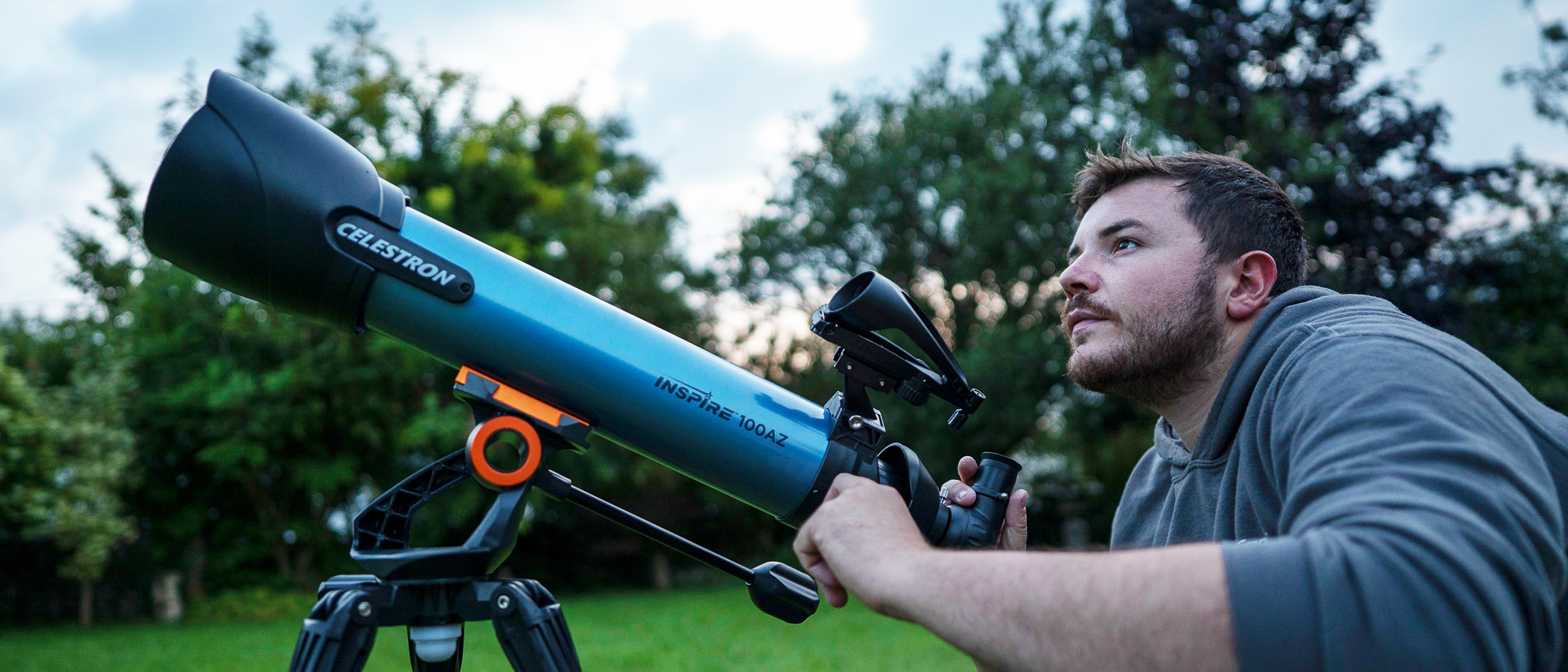Live Science Verdict
Overall, this telescope is a great choice for beginning your celestial journey. It's affordable, lightweight and easy to navigate — and Celestron goes the extra mile to assist in your astronomical journey.
Pros
- +
Lightweight, compact design
- +
Good quality optics
- +
Affordable price point
Cons
- -
Very lightweight design
- -
Choice of materials
- -
Limited magnification with eyepieces supplied
Why you can trust Live Science
If you are curious about the stars, the Celestron Inspire 100AZ is a great telescope with which to begin your astronomical journey. Constructed using professional-grade optics and coming from a reputable brand, this telescope is simple to operate and set up, and sits within an affordable price range.
Celestron is a trusted, reputable brand that produces some of the best telescopes on the market. This telescope's excellent optics and magnification provide the observer with high-contrast images that will reveal further details on the surface of the moon, brighter planets and even brighter details within deep-sky objects. This is a great piece of kit to aid in your astronomical adventures, and provides simple instructions for setting up the instrument to give the user a "window into the universe."
Celestron Inspire 100AZ review
Celestron Inspire 100AZ: Design
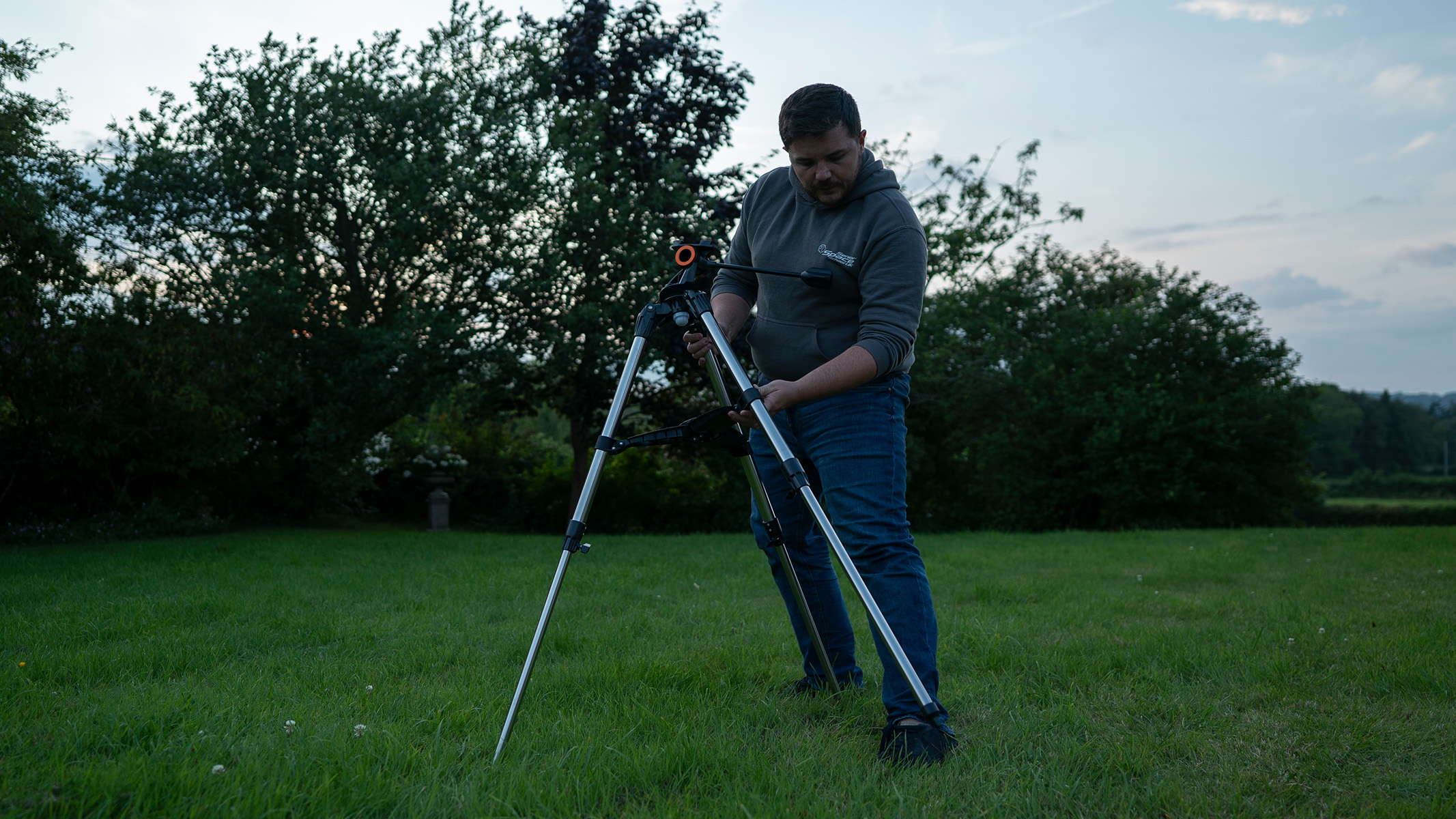
- Refractor telescope
- Steel tripod mount
- Easy to use
The Celestron Inspire 100AZ is based on a traditional refractor-type design and is the largest model in the 'Inspire' family, allowing — in conjunction with the supplied eyepieces — for a good level of magnification to observe celestial objects with clarity.
With a 660mm focal length and 100mm aperture, this setup provides varying degrees of magnification and resolving power, to hone in on your astronomical target of choice, including details on planetary surfaces, such as the polar ice caps of Mars and the belts of Jupiter, not to mention the Galilean moons and the Cassini division in Saturn's rings.
Refractor-style builds are notorious for optical defects, including chromatic aberration due to the natural alignment of the optics. In the case of the Celestron Inspire 100AZ, though, its build and fully-coated glass optics greatly reduce such effects and provide clear, crisp images.

Optical design: Refractor
Aperture: 100 mm (3.94-in)
Focal length: 660 mm (25.98-in)
Focal ratio: f/6.5
Mount type: Manual alt-azimuth
This instrument is supplied with a steel tripod mount, providing a level of durability to the overall design. It is lightweight and is both compact and portable.
One clever design feature allows for an extended accessory tray when fully extended, which can be simply collapsed when setting down your tripod mount. This can be locked into position to stabilize moving components and further prevent accidental movements during observation.
Get the world’s most fascinating discoveries delivered straight to your inbox.
The tripod legs are extendable to double the overall length. This allows for the telescope to be set to a range of heights, whether from a seated position or while standing. After reviewing this setup, we would personally recommend not fully extending the tripod legs. This will greatly reduce the aforementioned optical defects and prevent movement due to environmental factors, including wind disturbance.

As a beginner's telescope, this model includes all the essentials for a night's observing. Included in the accessories is an adaptable red torch, which can be used for a number of applications, from being handheld or otherwise fastened above the accessory tray. This is a great design inclusion, introducing the user to night vision as opposed to white light — this is beneficial if used in dark-sky locations for protecting the surrounding environment while still being able to operate the telescope.
The supplied Starpointer Pro is a well-designed, simplified form of locating objects in the night sky. Powered using a CR2032 battery, it provides a compact alignment process for your setup., using two circular reticules as opposed to one bright, shining red dot to locate your targets simplifies the alignment process. Having a 40mm optical window also provides a greater field of view, making celestial targeting easier.
The telescope's lens cap can also be used as a smartphone adapter. Your smartphone or similar device can be placed against a rubberized friction surface to prevent movement during photography and operation. Some slight maneuvering will be needed to align your camera through the imaging port (in place of the eyepiece). A device can then be secured by using two adjustable bungee cords, which will prevent your smartphone from moving unexpectedly during operation. The adapter is secured in place in the eyepiece holder by using two set screws.
This telescope incorporates a manual focus adjustment with a micrometer scale, which is built into the design of the optical tube. This allows for simplified focusing by noting the "sweet spot" for future observing targets.
Celestron Inspire 100AZ: Performance
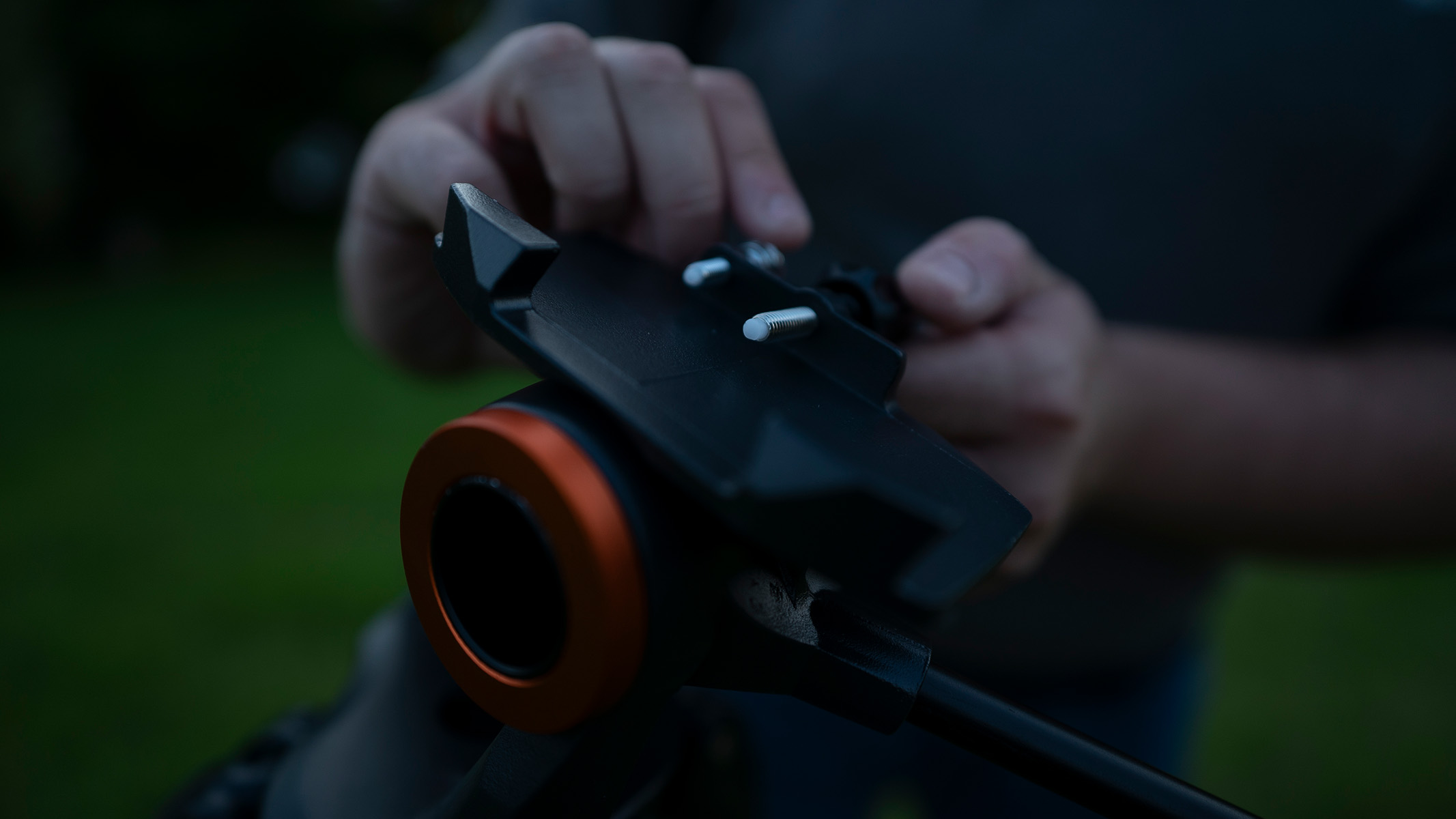
- Quick set-up time
- Magnification (eyepieces)
- Lightweight setup
The ergonomics of the Inspire 100AZ allow for the easiest set-up in the series. Such simplicity involves popping open the tripod legs, turning the locking knob to fold out the accessory tray and attaching the optical tube assembly by using the quick-release dovetail mount on the tripod mount. It is as simple as that to get observing in a small amount of time.
More time may be needed to align your finderscope and to analyze the focus of your intended object, but overall this is a great example of a "ready-to-go" telescope.
Combined with the optical tube's focal length, the two 20mm (33x magnification) and 10mm (66x) Kellner-style eyepieces supplied offer fields of view that are more than suitable for observing a plethora of deep-sky objects (DSOs), notably the Andromeda galaxy and the Orion Nebula.
This can extend further to fainter nebulas and star clusters, although your environment and the amount of light pollution will dictate resolving power when it comes to such targets.
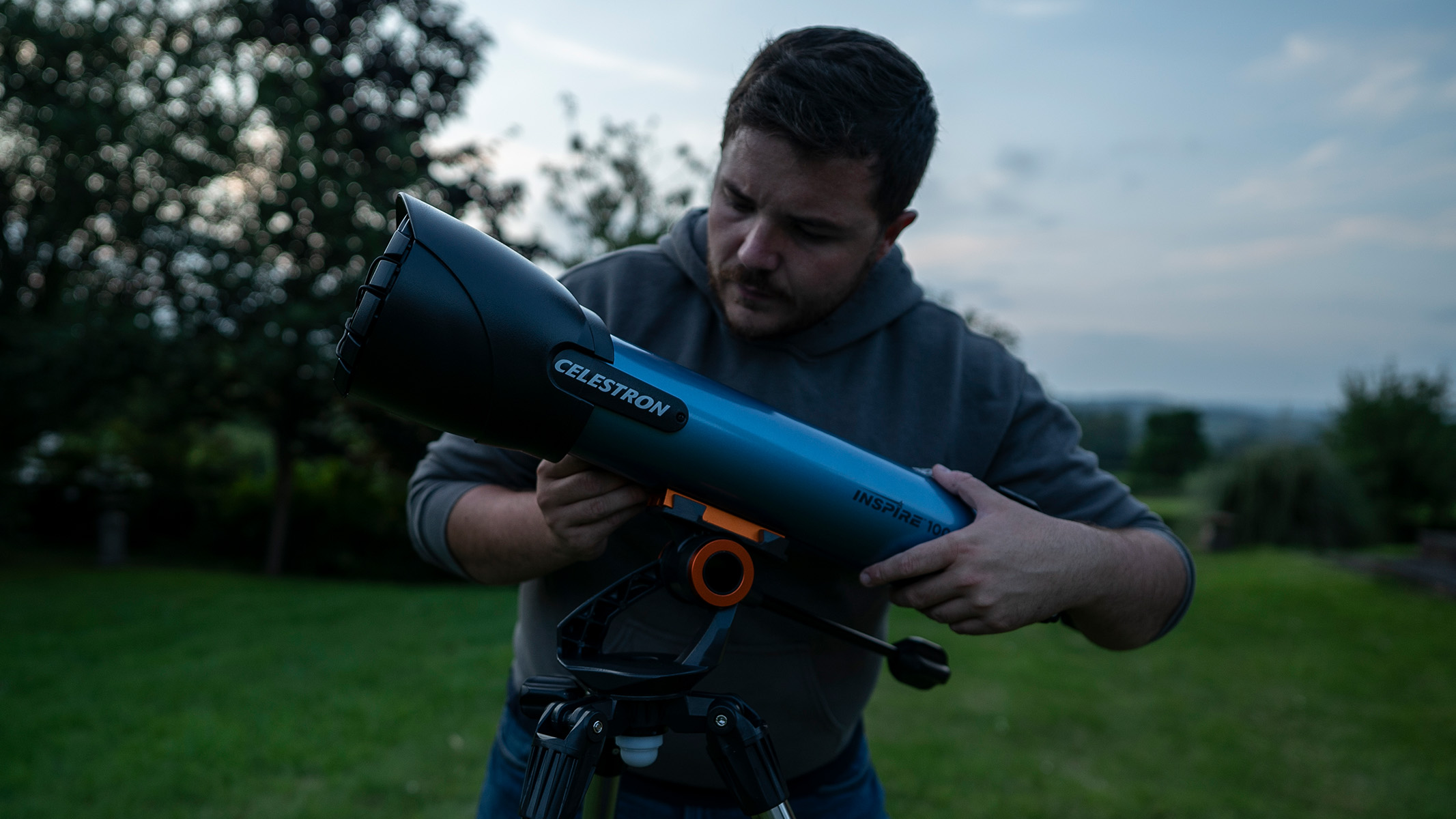
One of the unique selling points of this telescope is its lightweight design, which is noticeable when you take the telescope and its components out of the box. This is a great design consideration and is not only suited for younger stargazers and for ease of use in setting up the telescope, which makes it very portable in nature.
Some more advanced telescopes require a permanent installation or are not as portable due to weight being added to the overall design. By contrast, the Celestron 100AZ is built with portability in mind. Weighing in at 12.4 lbs (5.62 kg), the individual parts can be set up and down with ease, whether that be in your backyard or in your car.
This may not suit some users, who might argue that the setup is not rigid enough, compared to the heavy-duty models mentioned. However, the purpose of this telescope is to appeal to a wide range of audiences, from beginners to experienced stargazers, many of whom will appreciate this portability.
Celestron Inspire 100AZ: Functionality
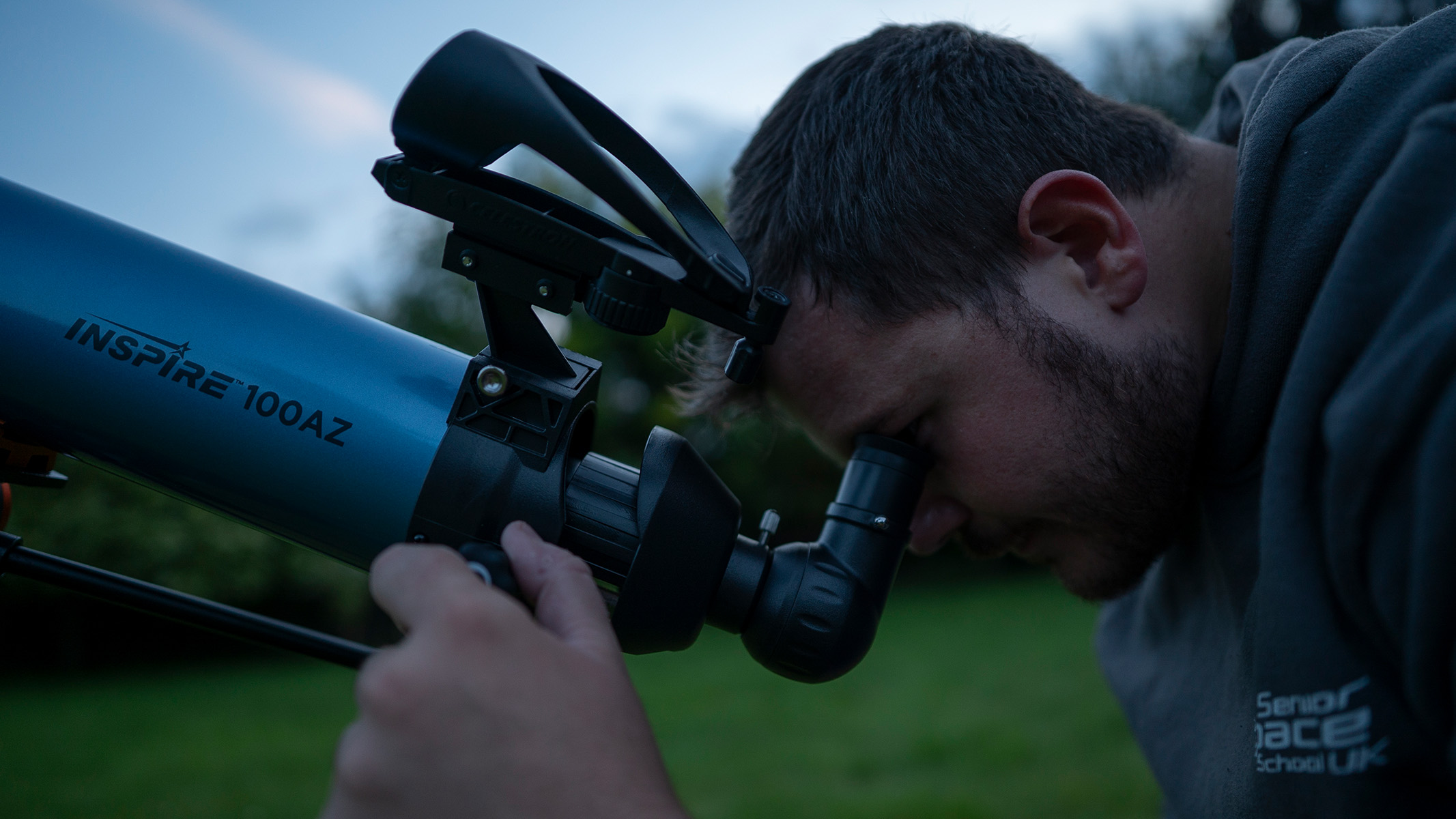
- Micrometer focus scale indicator
- Right Ascension and Declination rods
- Observing expectations
It sounds advanced, but the micrometer scale indicator is a very simple and easy-to-use accessory built into the focuser of the telescope's optics. Whether you're using the scope for terrestrial, wildlife or astronomical observation, each subject will have different focal points. This is a very handy tool for keeping a record of when you have reached the 'sweet spot' of your intended target.
An example of this could be pre-focusing on a night's target before attending a star party with your astronomy group. Because you know where the sweet spot is to capture the sharpest images possible of the craters on the moon, if your equipment were to become dislodged or if you're operating in low-light conditions, this feature can help you reach focus very quickly — a great feature of the Inspire 100AZ.
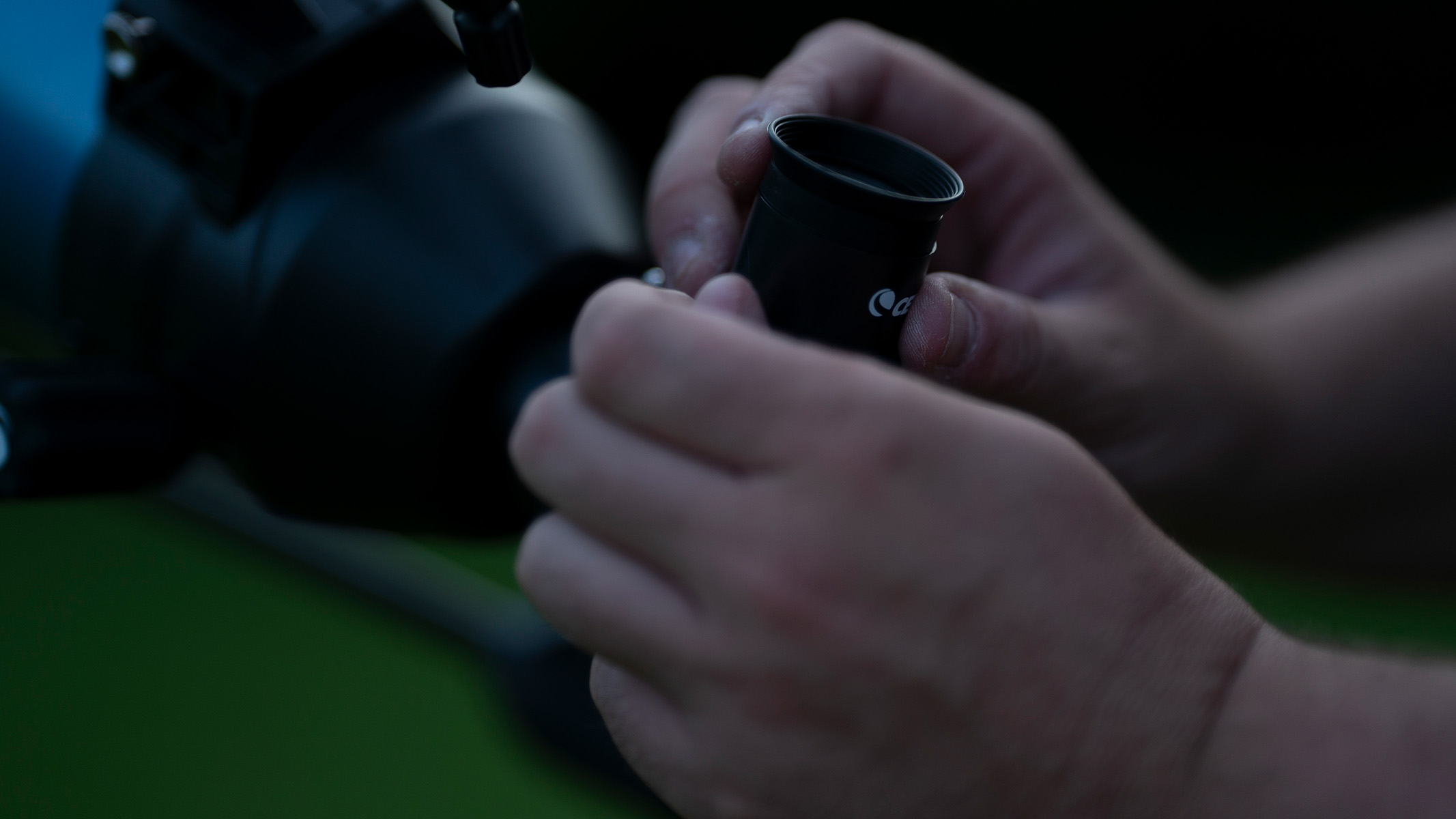
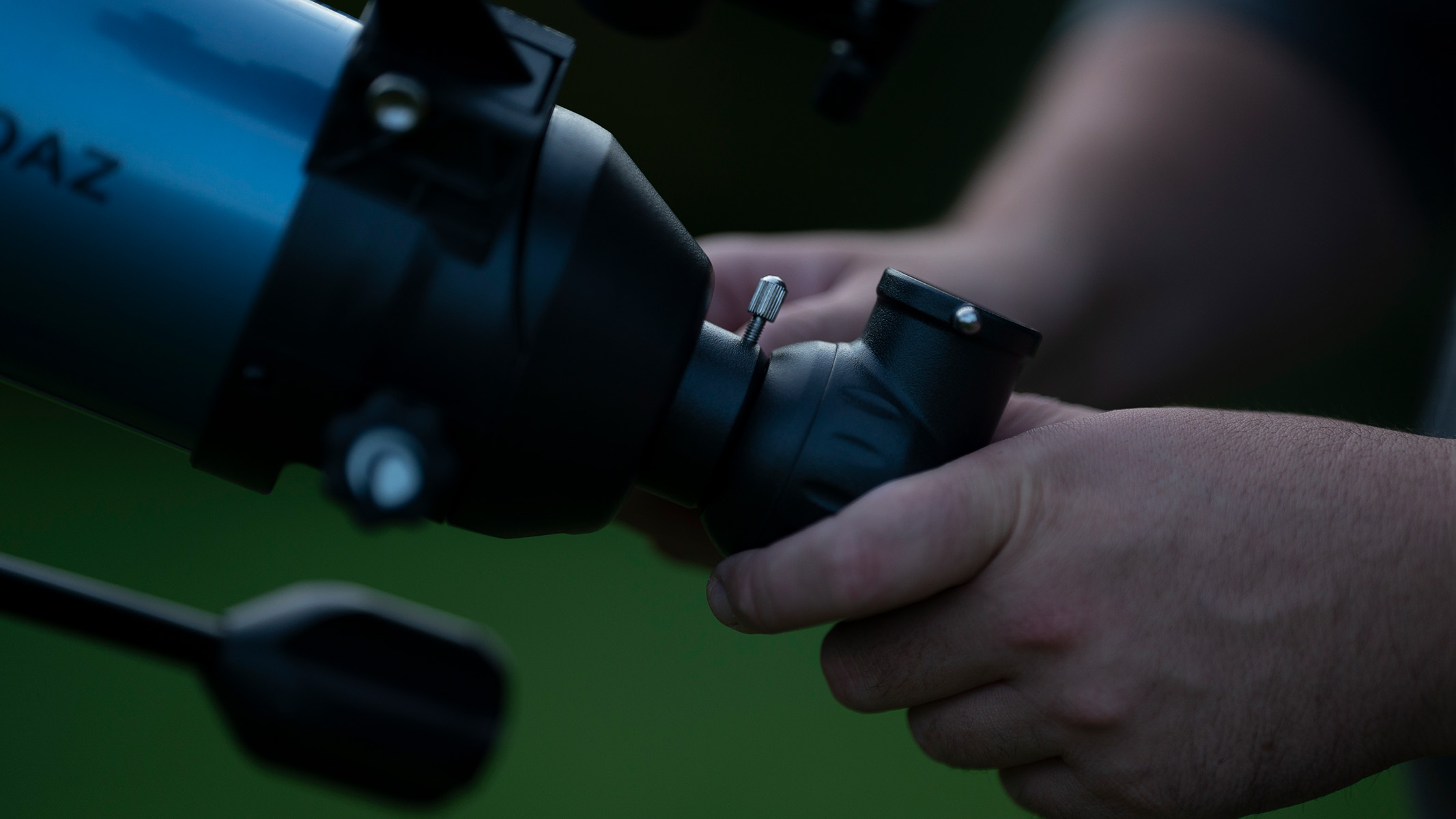
In this design, the Right Ascension and Declination rods act very much like a standard photographic tripod head. In conjunction with the Starpointer Pro, they make it simple and easy for the observer to locate a target and then view it centrally through the eyepiece. The rods can then be secured to prevent sudden movements from moving your subject out of the field of view. For a beginner, this is a great way to observe the cosmos in the quickest way possible.
Once you are finished observing, you can move on to the next target. The only limitation here, due to Earth's rotation, is the amount of time your subject will stay in view. Slight adjustments can be made to your telescope's position, but this can become very fiddly.
Keeping your subject centered for longer would involve the use of a tracker, such as an equatorial mount. However, we personally feel this would defeat the object of this setup, which is aimed primarily at beginners. If in time the user wished to upgrade their equipment and continue their astronomical journey, this would be an option for them to consider.

The Inspire 100AZ has a 660mm focal length and a 100mm aperture. With the 20mm and 10mm eyepieces provided, this combination will provide sharp views of the Moon.
However, observing will be made more challenging purely by the build and resolving power of this telescope. You will most certainly be able to distinguish the notable patterns and satellites of brighter solar system objects. However, to resolve those finer details in greater clarity, optical tube assemblies of greater focal lengths and aperture will be required.
All the same, though, the Inspire 100AZ will do what it sets out to do, which is to give the user their first glimpse of the universe and inspire a new generation of astronomers and stargazers.
Should you buy the Celestron Inspire 100AZ?

✅ You're just getting started: The Celestron Inspire AZ100 is built with beginners in mind.
✅ Portability matters: It's light enough to accompany you on your travels.
❌ You want more bells and whistles: More advanced users may find the Celestron Inspire AZ100 feature-light.
❌ Tracking is important: The supplied mount acts like a simple tripod with no star-tracking capabilities.
If you have an affinity for the stars and wish to pursue a journey through the cosmos, this would be a good telescope to go for, with a sleek overall appearance, sound optics and ergonomic design.
If you plan to use your telescope in your backyard or a short drive from home, the lightweight, compact design makes this a great contender.
If you need a telescope that is simple to operate and are simply looking to acquire your first view of the moon and planets, this telescope offers brief instructions that will help you start looking up in a matter of minutes.
Your purchase also includes a year's free subscription to SLOOH Astronomer, which will let you. remotely control and image through professional-grade telescopes, access live-streamed SLOOH shows and more.
If this product isn't for you
If you are interested in doing some more serious astronomical observation and want to observe finer details on the moon and planets, the Celestron SE Series of telescopes would be a good option. These telescopes are more expensive but offer a more advanced feature set.
If the idea of a telescope doesn't suit your needs, you may want to consider using a pair of the best binoculars for stargazing, such as the Celestron 71009, a compact and affordable binocular with high-quality optical coatings. It may also be worth considering a tripod to support them during observation.
How we tested the Celestron Inspire 100AZ
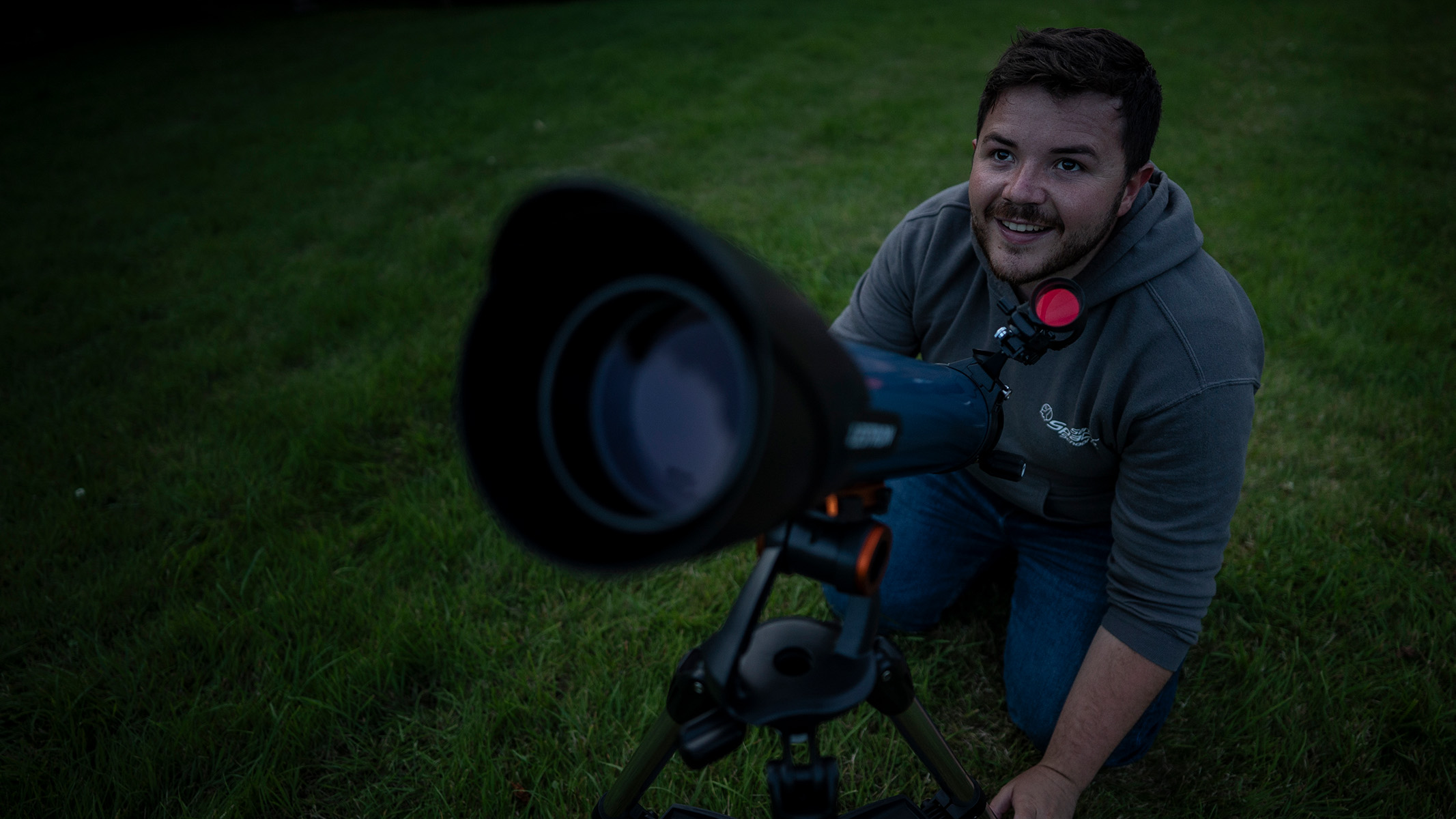
The Inspire 100AZ was tested from a Bortle 3 location in the Mendip Hills Area Of Natural Beauty in Somerset, U.K. From such a location, the majority of celestial objects could be tested to the limits, looking at overall resolving power, clarity of image and setup time.
During our observations, the moon was reaching its waxing gibbous phase and appeared low to the horizon. Due to this, any nearby housing and settlements could be expected to put the Inspire 100AZ through its paces, but in practice, it performed very well. The craters were nice and sharp and the lunar seas appeared clearly defined.
We tested the scope's limits by pointing it towards the Hercules Starcluster (M13). The Celestron's resolving power was such that M3 was just about distinguishable using averted vision techniques, and was defined as a faint, glowing cloud through the eyepiece.

Josh Dury (B.A. FRAS) is an Award-Winning Landscape Astrophotographer, Presenter, Speaker and Writer based in Somerset, UK. His work has been recognized by NASA, Astronomy Picture Of The Day, BBC, CBS, and CNN, amongst others. With endorsements from Apollo 11 Astronaut Buzz Aldrin and ESA British Astronaut Tim Peake. His work has been recognised by major photographic and astronomical bodies, including The World at Night (TWAN), Astronomy Photographer of the Year, Historic Photographer of the Year and PetaPixel, whilst collaborating with photographic brands: Canon, Sigma, Benro, NiSi and Tenba. As a Delegate of The International Dark-Skies Association (IDA) he uses astrophotography as a platform, in raising awareness of dark-sky conservation and the impacts of light pollution to the natural environment.
